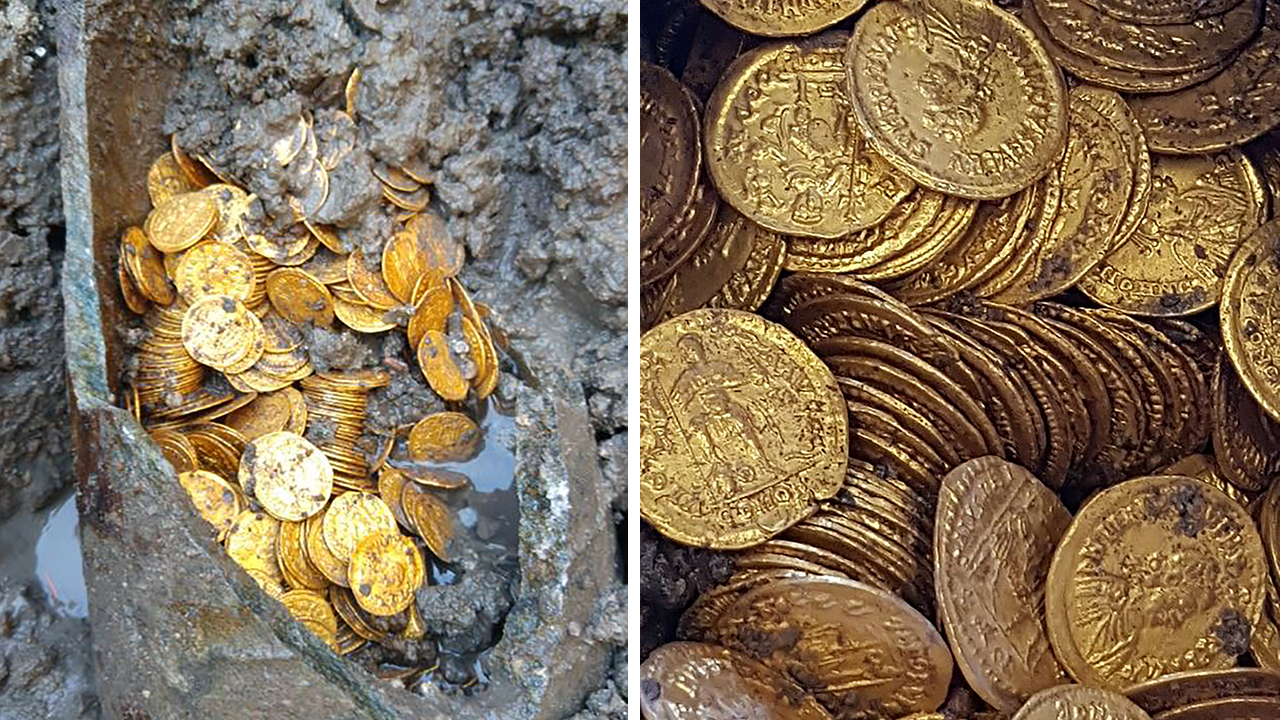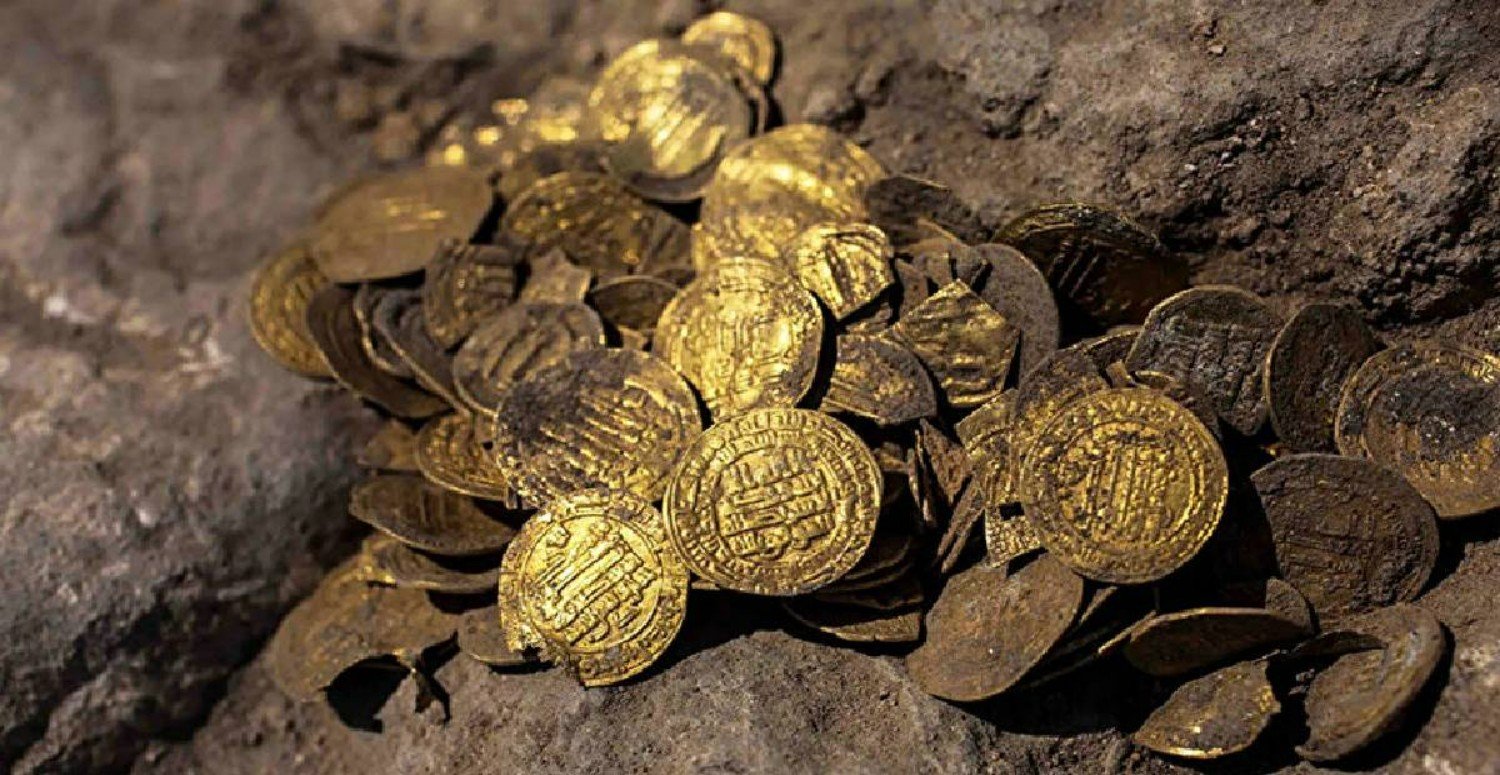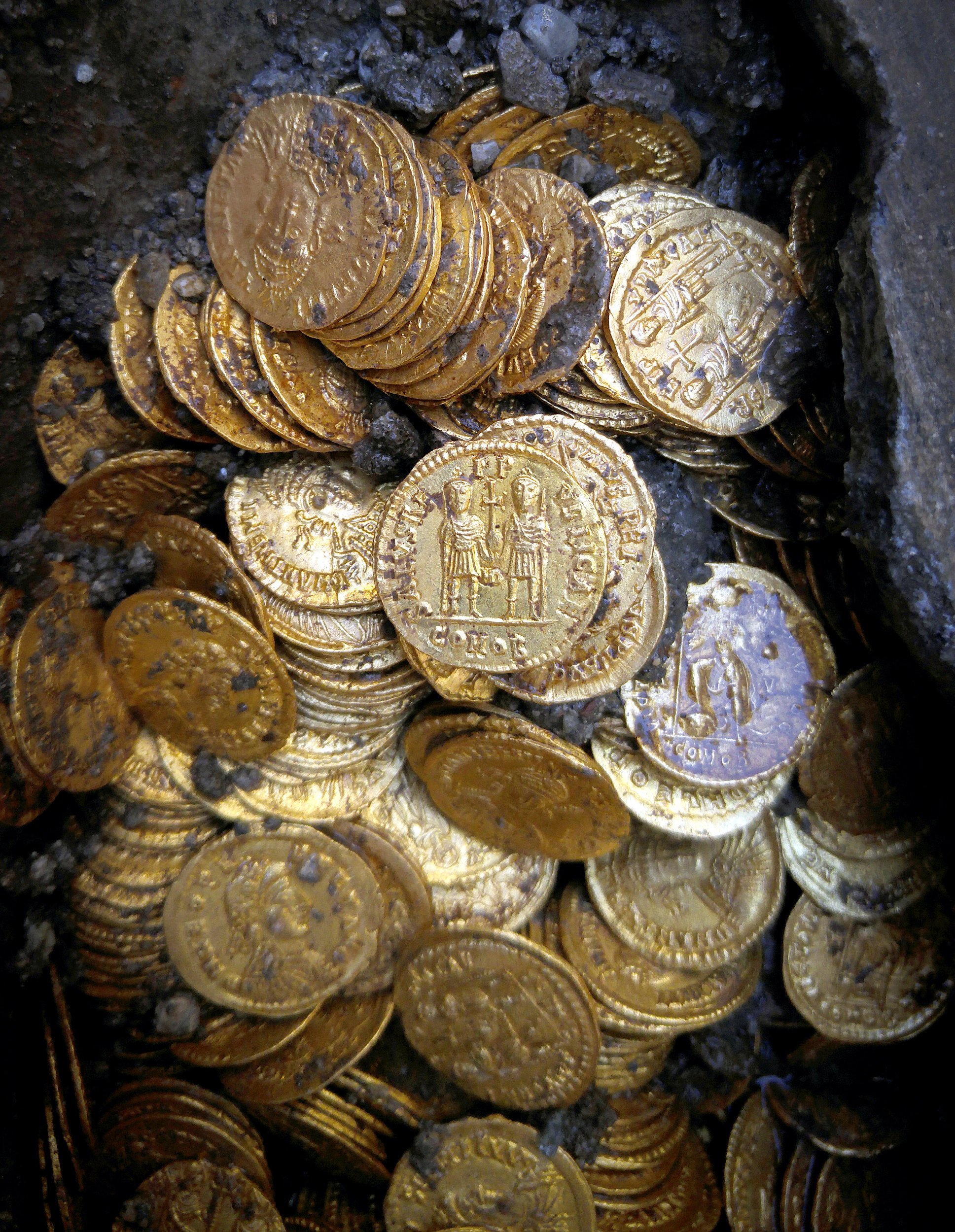
Archaeologists found approximately 300 pieces of gold coins from Roman times.
These coins are put in a jar and planted in the ground. It is estimated to be 1500 years old… pergh!One of the advantages of gold is that it does not rust. Despite having been planted for over 1,500 years, it still looks like new.
Gold is a metal that used to be a medium of exchange in the past.
Even in modern life, traditional jewelry is passed down from generation to generation, from ancestors to grandmothers, mothers and grandchildren.That’s the golden edge!

Crusader-era gold coins discovered
An urn containing Crusader- era gold coins worth up to $500,000 was found buried near an ancient Roman military fort in Israel. The gold coins were placed by Christian soldiers at the behest of the knight standard bearers while the Christian army faced constant attacks from a large Muslim army.
The banner group of knights was defeated in April 1256. The gold coins were already of great value in 1265 and were thought to have been placed, actually hidden in a broken urn to avoid discovery.

The fort was also destroyed in April 1265 by the Mamluk army who defeated the Crusader army and the treasure was only saved thanks to the thoughts of one of the Christian soldiers.”It’s in a small jar that is partially broken. The trick is to plant something broken in the ground and bury it to hide the gold coins inside. If someone finds the jar, they won’t dig it up and see the contents and find the gold coins. When we start digging, the gold coins will come out,” Oren Tal of Tel Aviv University told Fox News.

The Roman military fort in Apollonia National Park has uncovered most of its archaeological treasure, but scientists excavating the 13th century layer of soil were surprised to find an urn containing gold coins. The clay urn contained more than 100 gold coins from the time when the Crusaders conquered the fort that was originally built by the Roman army.
The gold coins found in the fort date back to the Fatimid empire in North Africa and predate the destroyed fort by 200 to 300 years. Gold coins were minted in Tripoli and Alexandria and were very valuable.
“Fatimid-era coins are very difficult to study. The letters are sometimes very difficult to interpret,” says Tal.
The coins can sell for up to US$5,000 each, according to the Israeli newspaper Haaretz.
See the current gold price here. Follow us on Facebook here.






